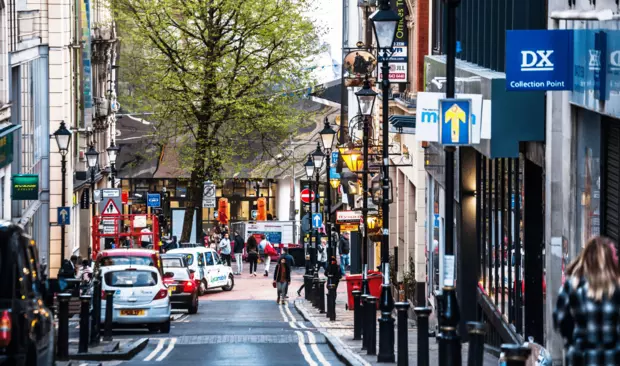Winners and losers: The changing landscape of UK retail

The world of retail is undergoing a significant transformation, and the UK is no exception. In recent years, we have witnessed the closure of numerous iconic retail stores, while simultaneously witnessing the rise of new players like Gymshark, setting up shop on major high streets.
This begs the question: why are huge retailers like Debenhams and Toys “R” Us shutting down their stores, and what is it that companies like Gymshark are doing differently to succeed?
The struggles of traditional retail
Traditional retail giants that once dominated the UK high streets are now facing significant challenges. Factors such as changing consumer behavior, the rise of ecommerce, and a lack of adaptability have contributed to their downfall.
Unfortunately, these retailers have been slow to embrace digital transformation and failed to understand the evolving needs and preferences of modern consumers. As a result, their once-thriving stores are now struggling to attract customers, leading to store closures and financial losses.
Reimagining the retail experience
Gymshark, a fitness apparel brand, represents a new breed of retailers that are thriving in this ever-changing landscape.
Despite being born online, Gymshark recognised the importance of offline presence to foster trust and deepen customer engagement. Their strategic approach of opening stores on major high streets demonstrates a profound understanding of the customer journey and the value of providing a seamless shopping experience across both physical and digital channels.
Building trust through physical stores
Gymshark's decision to establish physical stores is not merely about sales, but rather about building trust and strengthening brand loyalty. The physical space allows customers to experience the brand firsthand, touch and try on the products, and interact with knowledgeable staff. It creates a sense of community and authenticity that is often lacking in the online realm.
By bridging the gap between the digital and physical worlds, Gymshark has successfully created a holistic shopping experience that resonates with their target audience.
A new era of retail spaces
Gymshark's presence on major high streets symbolises a broader shift in the retail landscape. These new players are not just opening stores; they are transforming the concept of the high street itself. Gone are the days when high streets were solely populated by traditional retailers.
Now, they are becoming dynamic hubs that combine retail spaces with experiential elements, such as fitness classes, events, and interactive displays. The focus is on creating destinations that offer more than just products but an immersive and memorable experience.
Lessons for other retailers
The success of Gymshark and other emerging retailers holds valuable lessons for traditional players.
Firstly, it is crucial to adapt to changing consumer behavior and preferences. This means investing in digital capabilities and integrating online and offline channels seamlessly.
Secondly, retailers must prioritise building trust and fostering meaningful connections with their customers. Physical stores can play a vital role in achieving this, offering tangible experiences that leave a lasting impression.
Lastly, retailers should consider reimagining the retail space to align with the expectations of the modern consumer, creating environments that go beyond transactional interactions and instead offer immersive experiences.
The future of modern retail
The winners and losers of UK retail reflect the shifting dynamics of the industry. Traditional retailers are struggling to keep up with changing consumer demands, while innovative brands like Gymshark are capitalising on the need for a seamless, integrated shopping experience.
By recognising the importance of physical stores, Gymshark has successfully built trust and engaged customers in ways that online-only retailers struggle to achieve. The evolving retail landscape demands adaptability and a customer-centric approach. To survive and thrive, retailers must embrace change, prioritise building connections, and redefine the retail experience for the modern consumer.